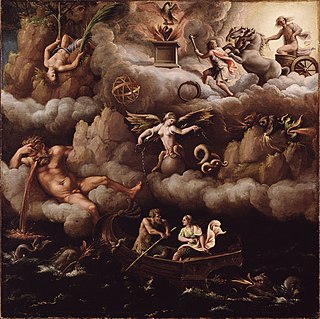
A monster is a type of fictional creature found in horror, fantasy, science fiction, folklore, mythology and religion. Monsters are very often depicted as dangerous and aggressive, with a strange or grotesque appearance that causes terror and fear, often in humans. Monsters usually resemble bizarre, deformed, otherworldly and/or mutated animals or entirely unique creatures of varying sizes, but may also take a human form, such as mutants, ghosts, spirits, zombies, or cannibals, among other things. They may or may not have supernatural powers, but are usually capable of killing or causing some form of destruction, threatening the social or moral order of the human world in the process.

Frankenstein is a 1931 American pre-Code science fiction horror film directed by James Whale, produced by Carl Laemmle Jr., and adapted from a 1927 play by Peggy Webling, which in turn was based on Mary Shelley's 1818 novel Frankenstein; or, The Modern Prometheus. The Webling play was adapted by John L. Balderston and the screenplay written by Francis Edward Faragoh and Garrett Fort, with uncredited contributions from Robert Florey and John Russell.
Hammer Film Productions Ltd. is a British film production company based in London. Founded in 1934, the company is best known for a series of Gothic horror and fantasy films made from the mid-1950s until the 1970s. Many of these involve classic horror characters such as Baron Victor Frankenstein, Count Dracula, and the Mummy, which Hammer reintroduced to audiences by filming them in vivid colour for the first time. Hammer also produced science fiction, thrillers, film noir and comedies, as well as, in later years, television series.
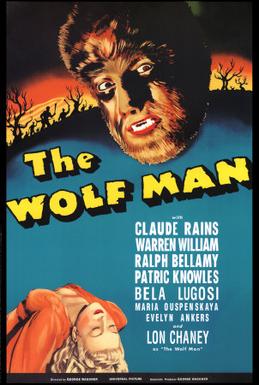
The Wolf Man is a 1941 American gothic horror film written by Curt Siodmak and produced and directed by George Waggner. The film stars Lon Chaney Jr. in the title role. Claude Rains, Warren William, Ralph Bellamy, Patric Knowles, Bela Lugosi, Evelyn Ankers, and Maria Ouspenskaya star in supporting roles. The title character has had a great deal of influence on Hollywood's depictions of the legend of the werewolf. The film is the second Universal Pictures werewolf film, preceded six years earlier by the less commercially successful Werewolf of London (1935). This film is part of the Universal Monsters movies and is of great cinematic acclaim for its production.
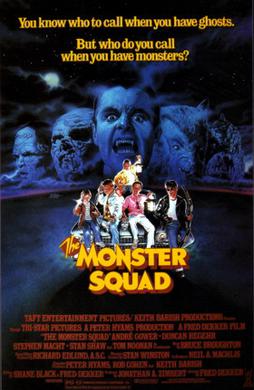
The Monster Squad is a 1987 American horror comedy film directed by Fred Dekker, and written by Dekker and Shane Black. Peter Hyams and Rob Cohen served as executive producers. It was released by TriStar Pictures on August 14, 1987. The film features pastiches of the Universal Monsters, led by Count Dracula. They are confronted by a group of savvy children out to keep them from controlling the world. Although it was financially unsuccessful during its theatrical run and received mixed reviews from critics, the film has gained a positive reception from audiences and has become a cult classic in the years since its release.

Monster Force is a 13-episode animated television series created in April 9, 1994 by Universal Cartoon Studios and Canadian studio Lacewood Productions. The story is set in approximately 2020 and centers on a group of teenagers who, with help of high tech weaponry, fight off against classic Universal Monsters and spiritual beings threatening humanity. Some of the crew have personal vendettas, while others fight for mankind out of a sense of altruism. The series aired in syndication alongside another Universal animated series, Exosquad. Universal Studios Home Entertainment released the first seven episodes to DVD on September 15, 2009.
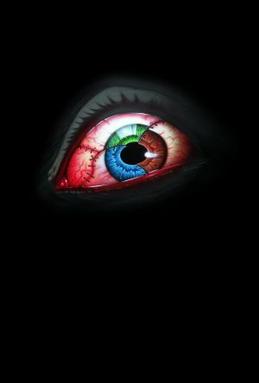
Frankenstein Unbound is a 1990 science fiction horror film based on Brian Aldiss' 1973 novel of the same name, starring John Hurt, Raul Julia, Bridget Fonda, Jason Patric, and Nick Brimble. The film is co-written and directed by Roger Corman, returning to the director's chair after a hiatus of almost fifteen years. This is his final film as a director before his death in 2024. He was paid $1 million to direct.
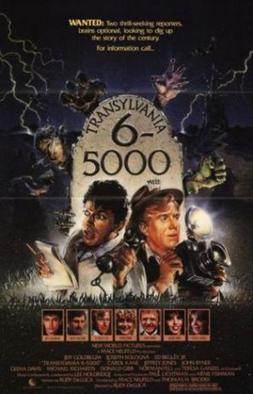
Transylvania 6-5000 is a 1985 horror comedy film about two tabloid reporters who travel to modern-day Transylvania to uncover the truth behind Frankenstein sightings. Along the way, they encounter other horror film staples—a mummy, a werewolf, a vampire—each with a twist.

The Universal Monsters media franchise includes characters based on a series of horror films produced by Universal Pictures and released between 1913–1956.

Mary Shelley's 1818 novel Frankenstein; or, The Modern Prometheus, and the famous character of Frankenstein's monster, have influenced popular culture for at least a century. The work has inspired numerous films, television programs, video games and derivative works. The character of the Monster remains one of the most recognized icons in horror fiction.
Monster Squad is a television series produced by D'Angelo-Bullock-Allen Productions that aired Saturday mornings on NBC from September 11, 1976, to September 3, 1977.

El Castillo de los monstruos is a 1958 Mexican horror comedy directed by Julián Soler.

Los Monstruos del Terror, also known as Dracula vs. Frankenstein and Assignment: Terror, is a 1970 Spanish-German-Italian horror and Sci-Fi film co-directed by Tulio Demicheli and Hugo Fregonese.. Eberhard Meichsner was also credited as a director only in the British promotional material, but by all accounts he was not actually involved.
Monster Mash is a 2000 Italian-American direct-to-video animated musical comedy horror film co-produced by DIC Entertainment, L.P. and Rai Fiction. It is an original story, based on the lore of Frankenstein, the Wolfman, and Count Dracula.
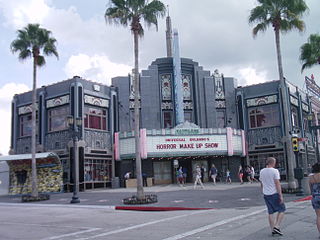
Universal Orlando's Horror Make-Up Show, formerly known as The Phantom of the Opera Horror Make-Up Show and The Gory, Gruesome and Grotesque Horror Make-Up Show, is a live show located at Universal Studios Florida that opened on June 7, 1990, along with the theme park. It is a live demonstration of Universal Pictures' legacy of horror movies, with particular emphasis on prosthetic makeup. It was inspired by the former The Land of a Thousand Faces show (1975–1980) at Universal Studios Hollywood. It is also notable for being one of two original opening-day attractions still in operation at Universal Studios Florida, the other being E.T. Adventure.
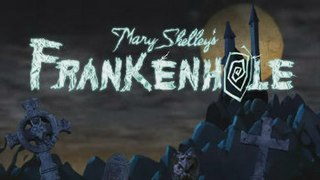
Mary Shelley's Frankenhole is an American adult stop motion-animated television series created by Dino Stamatopoulos for Cartoon Network's late night programming block Adult Swim. The series premiered on June 27, 2010 and ended on March 25, 2012, with a total of 20 episodes, over the course of 2 seasons.

The Creeps is a 1997 American comedy horror film, written by Benjamin Carr and directed by Charles Band.

The Frankenstein Theory is a 2013 American horror film directed by Andrew Weiner and stars Kris Lemche, Joe Egender, Timothy V. Murphy, and Eric Zuckerman. The film is distributed by Image Entertainment. It is presented as "found footage", pieced together from a film crew's footage. The film relates the story of a documentary film crew that follows a professor who journeys to the Arctic Circle in order to prove that Mary Shelley's classic 1818 novel, Frankenstein; or, The Modern Prometheus, was based on fact.

The Bride of Frankenstein is a fictional character first introduced in Mary Shelley's 1818 novel Frankenstein; or, The Modern Prometheus and later in the 1935 film Bride of Frankenstein. In the film, the Bride is played by Elsa Lanchester. The character's design in the film features a conical hairdo with white lightning-trace streaks on each side, which has become an iconic symbol of both the character and the film.
The World of Hammer is a British television documentary series created and written by Robert Sidaway and Ashley Sidaway, and produced by Robert Sidaway.
















